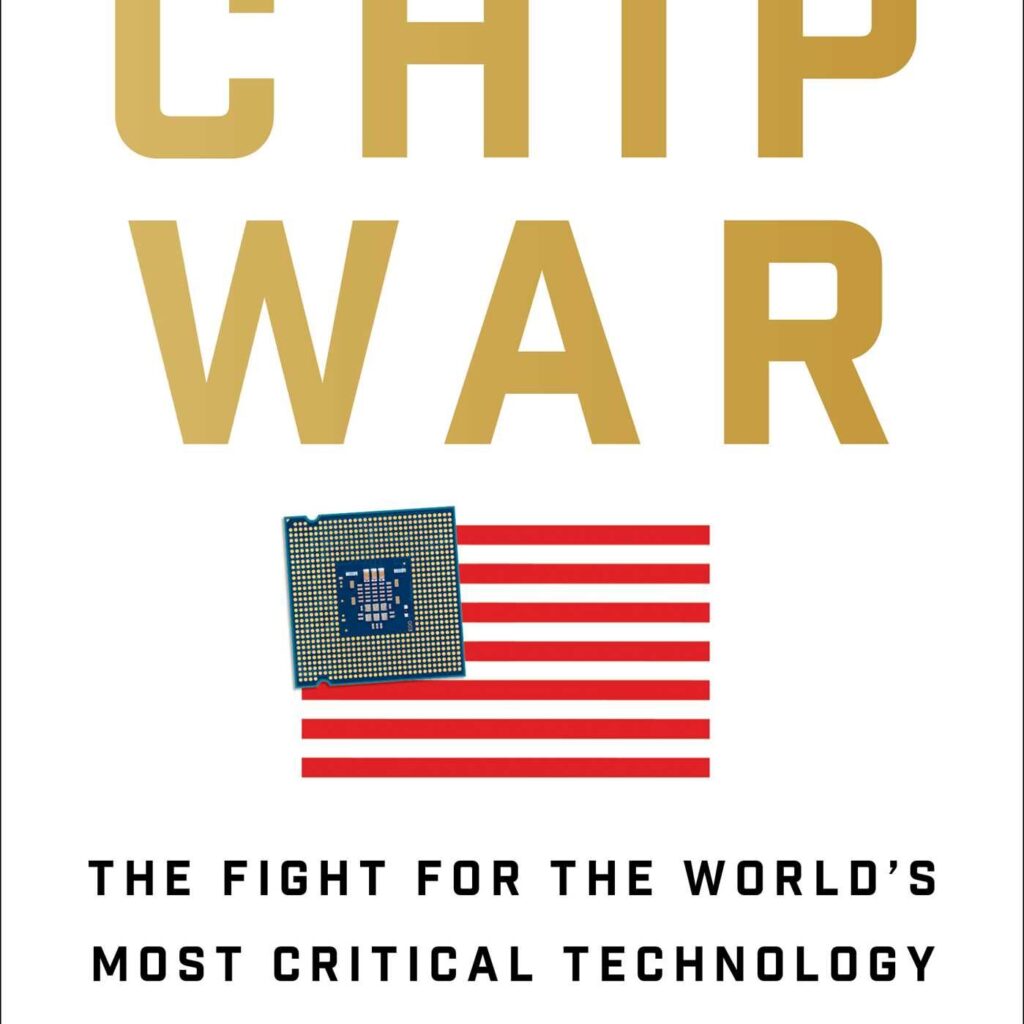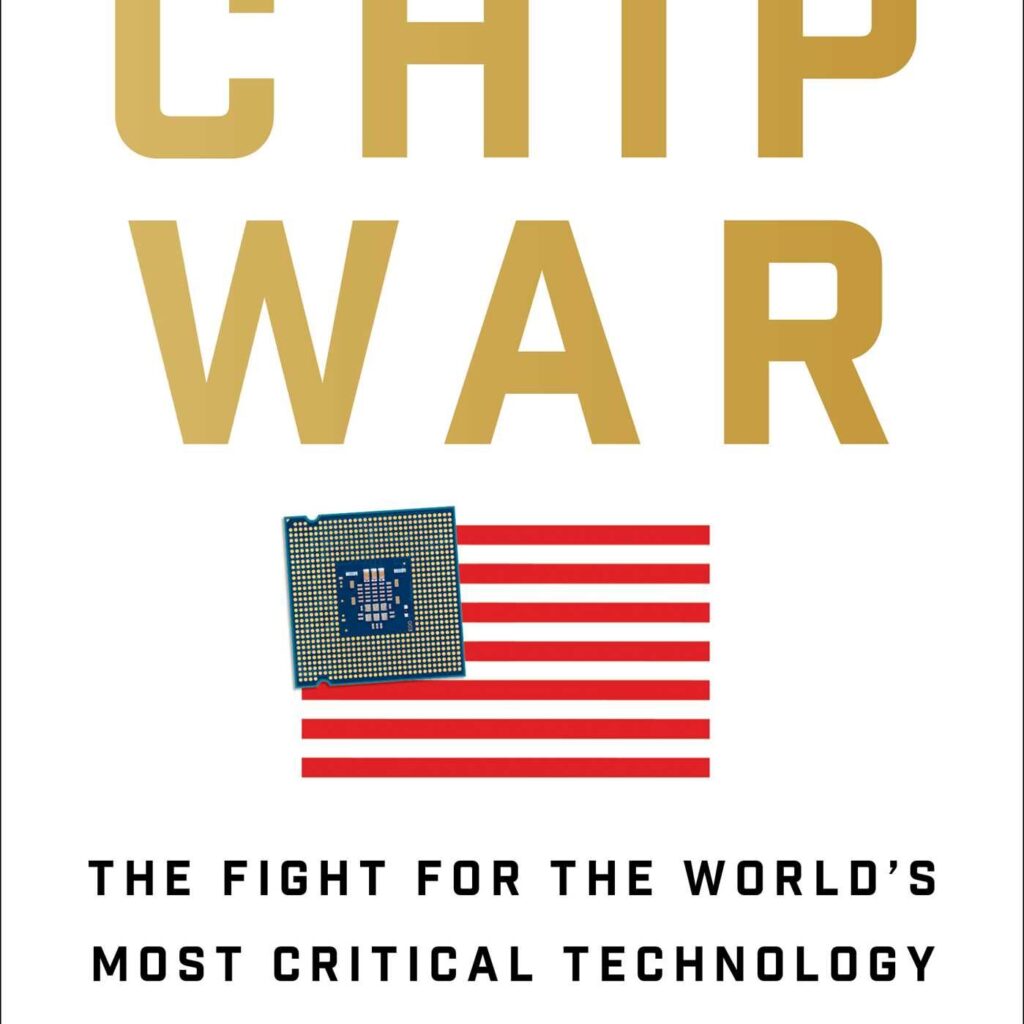
The Battle for Silicon Supremacy: Insights from Chris Miller’s Chip War
In an era where technology underpins nearly every aspect of daily life, the struggle for dominance in the semiconductor industry has emerged as a critical battleground. Chris Miller’s Chip War: The Fight for the World’s Most Critical Technology delves into the intricate history and geopolitics surrounding microchips, illuminating how these tiny components shape global power dynamics. The book serves as a comprehensive exploration of the semiconductor industry, revealing its significance not just in economics but also in national security and international relations. This blog post will summarize the key themes, characters, and pivotal moments in Miller’s compelling narrative, providing insights into the ongoing battle for chip supremacy.
Summary of Chip War
Chip War chronicles the rise of the semiconductor industry and its evolution into a cornerstone of modern technology. Miller, an economic historian, presents a detailed account of how microchips have transformed from a niche innovation into a vital resource that influences everything from smartphones to military capabilities. The book is structured around the historical development of the chip industry, the geopolitical implications of its growth, and the current challenges faced by the United States and China in this critical domain.
The Core Message
At its core, Chip War argues that control over semiconductor technology is not merely an economic issue but a matter of national security and global power. Miller emphasizes that the competition for chip supremacy will shape the future of international relations, as countries vie for technological dominance in an increasingly interconnected world. The book serves as both a historical account and a cautionary tale, urging policymakers to recognize the strategic importance of the semiconductor industry.
Main Concepts and Insights
1. The Historical Context of Semiconductors
Miller begins by tracing the origins of the semiconductor industry, highlighting key figures and events that paved the way for its development. He discusses the pivotal role of Moore’s Law, which predicts the exponential growth of transistor density on microchips, and how this principle has driven innovation in the field.
Key Takeaway: Understanding the Foundations
By providing a historical context, Miller helps readers grasp the significance of semiconductors in shaping modern technology. This foundation is crucial for understanding the current geopolitical landscape.
2. The Geopolitical Implications
A significant portion of the book focuses on the geopolitical ramifications of semiconductor dominance. Miller explores how the United States, having historically led the semiconductor industry, now faces increasing competition from China, which is investing heavily in its own chip capabilities.
Key Takeaway: The Race for Supremacy
Miller argues that the competition for semiconductor supremacy is a key element of the broader U.S.-China rivalry. The implications of this race extend beyond economics, affecting national security and global stability.
3. The Role of Global Supply Chains
Miller examines the complexities of global supply chains in the semiconductor industry, emphasizing how interconnected and interdependent the production process has become. He discusses the vulnerabilities inherent in this system, particularly the reliance on specific regions, such as Taiwan, for manufacturing.
Key Takeaway: Recognizing Vulnerabilities
By highlighting the fragility of global supply chains, Miller underscores the importance of diversifying production and ensuring resilience in the face of geopolitical tensions.
4. The Future of Semiconductor Innovation
The book also delves into the future of semiconductor innovation, exploring emerging technologies and trends that will shape the industry. Miller discusses the potential for breakthroughs in areas such as quantum computing and artificial intelligence, which could redefine the landscape of technology.
Key Takeaway: Embracing Innovation
Miller encourages readers to consider how ongoing advancements in semiconductor technology will impact various sectors and the importance of investing in research and development to maintain competitive advantages.
Notable Examples and Case Studies
Throughout Chip War, Miller provides various examples and case studies that illustrate his points, making the concepts relatable and actionable.
The Cold War Context
Miller draws parallels between the semiconductor race and the Cold War, illustrating how technological advancements played a crucial role in shaping military strategies and geopolitical outcomes. He highlights how the U.S. leveraged its technological superiority to counter the Soviet Union.
The Rise of Taiwan
The book emphasizes Taiwan’s critical role in the semiconductor industry, particularly through companies like TSMC (Taiwan Semiconductor Manufacturing Company). Miller discusses how Taiwan has become a focal point in the U.S.-China rivalry, with its semiconductor capabilities serving as a strategic asset.
The Impact of COVID-19
Miller also addresses the impact of the COVID-19 pandemic on the semiconductor industry, highlighting how supply chain disruptions exposed vulnerabilities and underscored the need for greater self-sufficiency in chip production.
Key Themes Explored
The Intersection of Technology and Geopolitics
A central theme in Chip War is the intersection of technology and geopolitics. Miller emphasizes that control over semiconductor technology is not just an economic concern but a matter of national security, with far-reaching implications for global power dynamics.
The Importance of Innovation
Innovation is another key theme, as Miller discusses the need for continuous advancements in semiconductor technology to maintain competitive advantages. He argues that investing in research and development is essential for future success.
The Fragility of Global Supply Chains
Miller highlights the fragility of global supply chains in the semiconductor industry, emphasizing the risks associated with over-reliance on specific regions. This theme underscores the importance of diversifying production and ensuring resilience.
The Role of Policy
The book also addresses the role of government policy in shaping the semiconductor landscape. Miller advocates for proactive measures to support domestic production and innovation, urging policymakers to recognize the strategic importance of the industry.
Practical Applications of Chip War
Miller’s insights offer valuable lessons for individuals, businesses, and policymakers seeking to navigate the complexities of the semiconductor industry. Here are some key takeaways:
1. Understand the Strategic Importance of Semiconductors
Recognize that semiconductors are foundational to modern technology and national security. Understanding their significance can inform better decision-making in both business and policy contexts.
2. Invest in Research and Development
Encourage investment in research and development to foster innovation in semiconductor technology. This investment is crucial for maintaining competitive advantages and driving future growth.
3. Diversify Supply Chains
Businesses should consider diversifying their supply chains to mitigate risks associated with over-reliance on specific regions. Building resilience in production can help navigate geopolitical tensions.
4. Advocate for Supportive Policies
Policymakers should prioritize policies that support domestic semiconductor production and innovation. Recognizing the strategic importance of the industry can lead to more informed decision-making.
5. Stay Informed About Technological Trends
Individuals and businesses should stay informed about emerging technologies and trends in the semiconductor industry. Understanding these developments can help anticipate future opportunities and challenges.
Conclusion: A Call to Action
Chip War serves as a compelling exploration of the semiconductor industry and its profound implications for global power dynamics. Chris Miller’s insights challenge readers to recognize the strategic importance of semiconductors in shaping the future of technology and geopolitics.
As we navigate an increasingly interconnected world, it is essential to understand the complexities of the chip industry and the competition for dominance between the United States and China. Miller’s narrative serves as both a cautionary tale and a call to action, urging individuals, businesses, and policymakers to prioritize innovation, resilience, and strategic thinking.
Ultimately, Chip War is not just a historical account; it is a roadmap for understanding the future of technology and its role in shaping global affairs. By embracing Miller’s insights, we can better navigate the challenges and opportunities that lie ahead in this critical domain.
Read Full Novel
Chip War: The Fight for the World’s Most Critical Technology by Chris Miller
Read Related Novels
- Read Be Useful by Arnold Schwarzenegger eBook Review
- Read Slow Productivity by Cal Newport Summary
- “The Ride of a Lifetime” by Robert Iger, Joel Lovell eBook Review
- A Curse for True Love
- Read Very Bad Company by Emma Rosenblum Summary
- House of Flame and Shadow by Sarah J. Maa
- A Queen This Fierce and Deadly eBook Summary


